Start of the Second Seminole War
The beginning of the hostilities of the Second Seminole War, with all three wars known as the Florida War, had their roots in the Treaty of Camp Moultrie. Signed in September of 1823, the treaty was an agreement that said the Seminole tribe would be reimbursed for costs of cattle, pigs, and farming equipment of the day. They'd also be provided rations for a year and have their way paid as they relocated to a reservation in Central Florida. The agreement also said that the government would pay the relocated Seminole around $5,000 a year, for twenty years and provide other resources for that same length of time. Under this treaty, all slaves captured by the Seminole, on their reservation land, were supposed to be turned over to the authorities. The Seminoles believed they would stay on this land for twenty years.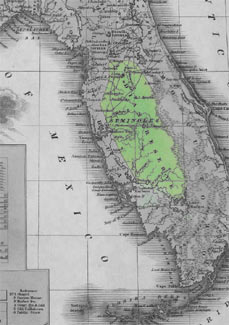 |
| See page for author [Public domain], via Wikimedia Commons |
see also: The First Seminole War
May 9th, 1832 the Treaty of Payne's Landing was signed by fifteen chiefs of Seminole clans of Southern Florida. Many of the terms of the treaty were similar to the Treaty of Camp Moultrie. Only now, the Seminole would be ordered to locate to Indian Territory. At this time, the expanse of the Indian Territory stretched across all of Arkansas and Oklahoma. In 1835, some Seminole clans resisted leaving, or chose not to leave, as ordered by the treaties. They felt they were pressured by the U.S. government to sign the treaties. Freed blacks living amongst the Seminoles also feared for their future, their freedom, once the relocation commenced.
Clashes and incidents increased during the mid and latter part of 1835. This caused the rapid increase of hostility between federal forces and the Seminole. The first clash was at Hogtown in June, near present-day Gainesville, after seven Seminoles had gone beyond the reservation boundary to hunt.
On June 19th, five of the seven Seminoles we're waiting for the rest of their group to show up. The five were then seen by a group of whites. Soon enough, a disagreement began as the whites accused the Seminoles of killing a cow. The Seminoles were attacked by the men and hit by their bull whips. Around that time, the two other Seminoles from the group arrived and saw what was going on. They fired shots at the settlers and a small shootout began. One Seminole was killed and another was wounded. While the white settlers had three injured.
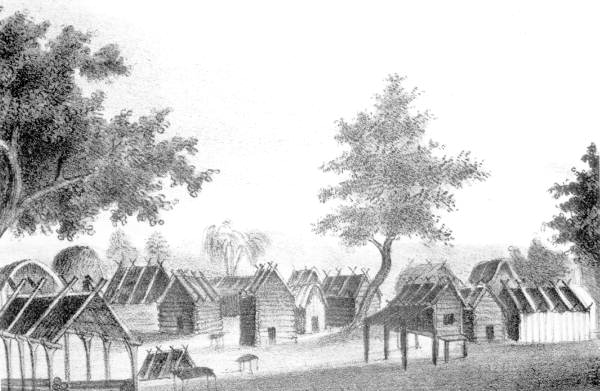 |
| By The original uploader was Dalbury at English Wikipedia (Transferred from en.wikipedia to Commons.) [Public domain], via Wikimedia Commons |
On December 18th, 1835, Colonel John Warren and his men, all a part of the Florida Militia, were on their way to Micanopy. Warren then told Captain Richards to take a detachment of his militiamen and help escort three wagons and a cart with supplies. They split near Hogtown at Kanapaha Prairie. The wagons they were escorting were guarded at the front and rear by soldiers, about 100 paces ahead and behind the wagons. Washington Ives headed the forward force while J. Sumeral headed the rear forces. Thirteen men also walked alongside the wagons.
At Black Point, a force of around 80 Seminole warriors, led by Osceola, attacked them in an ambush. Some of the Florida militiamen reinforced their defense of the wagons while others ran off after the first shots were fired by the Seminole. After some of the men were shot and killed, Sumeral, Ives, and a man named Sparkman tried to retreat with a wounded man, Tillis, that they'd placed on the supply cart. They were unable to retreat but held defense until the cart horse was shot and killed. At that time, the Seminole switched attention and began taking ammunition from the supplies and setting the wagons on fire. Due to this, the men ended up surviving the attack. Around this time, 30 reinforcements, led by Major John McLemore and accompanied by Sergeant Hurst, took chase after the Seminole forces. Hurst was shot while McLemore lost a horse, then another, and had to charge the forces on foot with around 15 of his men. Though they were unable to pinpoint where the Seminole were at, as the Seminole were attacking from behind the bushes and trees. Major McLemore and his men then retreated to Fort Crum.
Days later, scouts were sent out and they spotted a small force of Seminole nearby an area where a house was on fire. With this news, Colonel Warren sent out some of his forces to charge the Seminole and push them out. After this attack, the Seminoles scattered and some of the remaining wagon supplies were found in the Seminole camp.
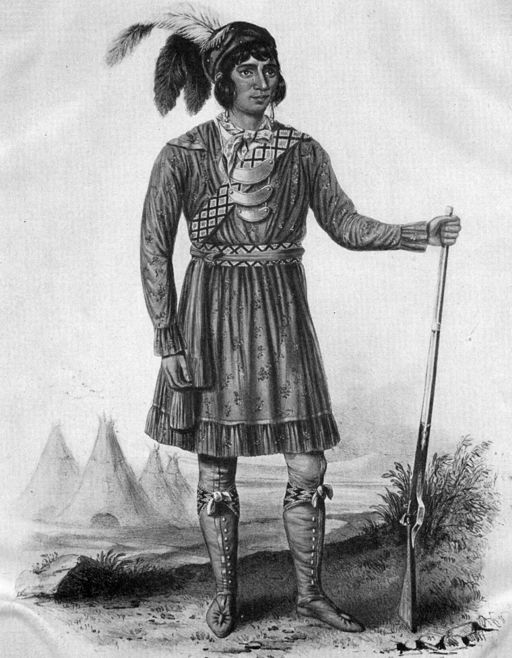 |
| By User:SEWilco [Public domain], via Wikimedia Commons |
Osceola and the Dinner Party Attack Outside Fort King
 |
| By Internet Archive Book Images [No restrictions], via Wikimedia Commons |
Dade Massacre - Battle at Wahoo Swamp
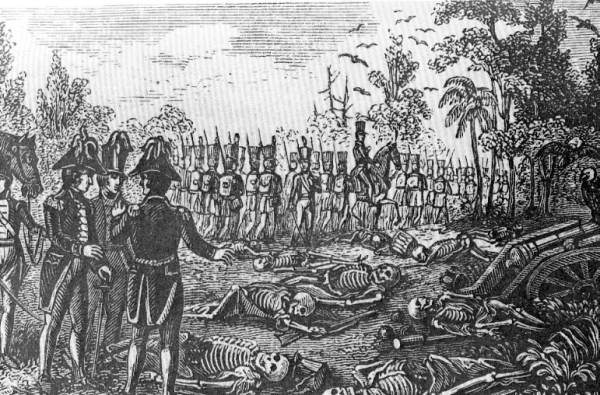 |
| See page for author [Public domain], via Wikimedia Commons |
The actual reason they needed troops though was because General Clinch moved his forces to a sugar plantation near Micanopy, known as "Auld Lang Syne", due to a lack of provisions. He'd sent the message to Fort Brooke to provide forces for the defense of Fort King. Once Dade and his forces made it to the pine barrens, they believe they'd have no problem making it to Fort King without incident. As it seemed the pine barrens would be an unlikely place to be attacked by the Seminoles that were shadowing their movements and following them.
On December 28th of 1835, five days into the march and in the area of Wahoo Swamp, Chief Micanopy, Jumper, and Alligator were waiting to ambush the troops. A force of around 180-250 Seminoles were hidden by the cover of palmettos and pines. Micanopy decided to attack here and gave up waiting for Osceola to arrive. With swamps making it difficult for Dade and his men to escape they had no choice but to fight back. Unfortunately, Dade's men had their guard down and the Seminole knew this. Many of the troops had their weapons inside their coats or on the wagons to keep them from the moisture. Once the attack by the Seminole commenced, the gunfire from Micanopy and other Seminole guns killed or injured nearly half of the command. It was Micanopy's shot that killed Dade, making Dade the first casualty. A captain, Upton S. Fraser, was killed at nearly the same moment. Three of the six officers were wounded and only Captain George W. Gardiner was without injury. He commanded the remaining forces to return fire with their cannon.
This and a bit of confusion caused the Seminoles to pull their forces back a short distance. The Seminole forces believed all of Dade's men to be dead or injured. One of the Seminole went to Alligator and told them that Dade's men were building small defenses out of logs. Alligator and Jumper headed back to the area, with a few warriors, and started another attack on the army forces. This battle lasted from early morning, around 8 a.m. and lasted until approximately 2 p.m., according to army survivors of the battle.
The army forces were decimated and Ransom Clark, Edwin De Courcey, and Joseph Sprague (who left separate from the other men) made their escape and headed off towards Fort Brooke, despite being injured. They ran as the Seminoles overran the remaining men, killing off some of them, stripping off the troops' clothes and taking items from them. Following the Seminole were a force of escaped slaves, allied with the Seminole, that proceeded to strip and/or kill the remaining army forces. Dade's interpreter, a black man named Louis Pacheco, was taken as a captive. The Seminoles, suffering low casualties, went back to Wahoo Swamp to celebrate and rest. Clark and De Courcey split to avoid being caught after they were chased by Seminole a day after escaping the battle. De Courcey ended up being killed. While Clark made it back to the Fort Brooke after being helped by a Seminole woman, on horseback, about a mile from Fort Brooke. It was this unknown Seminole woman who took him closer to Fort Brooke and dropped him off near the fort. Sprague also arrived at the fort probably sometime after Clark.
The area of the ambush was left abandoned for almost two months before General Edmund Pendleton Gaines arrived. They arrived at the Dade Massacre site on February 20th, 1836. They proceeded to identify Dade's men and gave them proper military burials. The cannon, which the Seminoles had thrown into a nearby pond, was removed from the pond and became the headstone of the officers killed in the battle. It would only be after the cessation of the war, on August 14th, 1842, that the men buried there would be reinterred at the St. Augustine National Cemetery. The defeat at Wahoo Swamp was seen as one of the worst U.S. Army defeats by Native American forces. With only the Battle of the Little Bighorn and St. Clair's Defeat being thought of as being worse.
Events of 1836
 |
| By Unknown photographer (http://www.floridamemory.com/items/show/28747) [Public domain], via Wikimedia Commons |
January 8th, 1836
The battle of Wetumka and another battle, the battle of Dunlawton, take place.
January 9th, 1836
The second battle of Micanopy. One soldier from the 2nd dragoons is killed in battle.
January 17th, 1836
Fighting breaks out in the area of St. Augustine with the biggest battle being at Anderson's Plantation. Around 120 Seminoles attack a militia, led by Benjamin A. Putnam, that are defending St. Augustine. The battle led to a loss of half of the militiamen before they retreated. Later on, Brigadier General Abraham Eustis and his forces head to St. Augustine.
 |
| Mathew Brady [Public domain], via Wikimedia Commons |
January 22nd, 1836
Brevet Major General Winfield Scott takes command of all war operations throughout the state of Florida.
February 13th, 1836
Major General Edmund P. Gaines arrived at Fort Brooke on February 9th. On this date, the 13th, he leaves Fort Brooke with 980 soldiers, mainly volunteers from Louisiana and Florida. Along with them is a detachment of a few men from Fort King. This is the first force, as written above, to arrive at the Dade Massacre site, on February 20th.
February 22nd to March 6th, 1836
General Gaines and his men arrive at Fort King. He then splits his men into three separate forces. He leaves with the forces and they head off to Withlacoochee. On February 27th, all three forces arrive at a planned location and begin to search for an area where they can safely cross the Withlacoochee River. As they searched, they were fired upon by an unknown number of Seminole from the opposite side of the river. The men drew back from the area of the river and camped out for the night. Another party went out on February 28th, commanded by Lieutenant James F. Izard, and they were fired upon again. Lieutenant Izard was killed. This set off a seven hour 'battle' between the forces, only separated by the Withlacoochee River. During this fight, General Gaines had his men build a log breastwork and named it Camp Izard. The attack against Camp Izard continued on through February 29th with one man killed and around 32 men wounded. He has a message sent out to General Clinch, who is at Fort Drane, to help attack the Seminole forces. General Clinch doesn't send his forces until March 4th. It is on this day that Gaines is hit by, although not seriously injured, a musket ball in the face, which knocks out his last tooth. Two days later, on the sixth, Gaines is approached by a small number of Seminoles displaying a flag of truce. General Gaines send out some of his own soldiers to meet and hold talks with them. As they are negotiating, General Clinch arrives with his forces and, unsure of what they're seeing, they begin shooting at the Seminoles, causing them to run to safety. On March 9th, General Gaines then turns over the commanding of Camp Izard to Clinch and leaves.
March 26th to April 5th, 1836
This is around the time that the major operations of the Second Seminole War began. Under the commanding of General Winfield Scott, military forces where had a plan of attack with three 'wings' of forces.
The right wing of these forces were commanded by General Duncan Clinch and they numbered at 1,968. This number includes 720 regulars and the rest of the force being comprised of Georgia and Louisiana volunteers. They were to march from Fort Drane to Camp Izard, crossing Withlacoochee River at a point near Camp Izard and then drive the Seminole in a southward direction towards the other two wings.
The center wing were commanded by Colonel William Lindsay and numbered at 1,250 men. Of this number, 260 were volunteers from Florida, 750 Alabama volunteers, and members of the 4th Infantry. They were to head from Fort Brooke and north to the Cove of the Withlacoochee and head off the Seminoles fleeing the right wing.
The left wing were commanded by General Abraham Eustis with 1,400 men. They were comprised of four companies of the First Regiment of Artillery, one regiment of South Carolina volunteer infantrymen, and a regiment of South Carolina mounted volunteers. They were to march from St Augustine to Mosquito Inlet (near present-day New Smyrna) then head off to Volusia. From Volusia, they were to cross St. John's river and head for an area near present-day Bushnell. From Bushnell, they were to head north and approach the Cove of the Withlacoochee by the way of Fort King.
Things didn't go as planned through due to the lack of roads and paths in the interior of Florida at the time. Also lacking were reliable maps of the region. So the only wing to make it to their objective was General Clinch's right wing. Eustis' left wing forces, in having to create their own roads, ran short on time and supplies. Instead of being able to reach Fort King, due to low supplies, they had to go to Fort Brooke instead. Lindsay's center wing also had a hard time. The relationship between the volunteers and the regulars were always strained and disagreements were becoming a regular occurrence. On the march to the Cove of Withlacoochee, Colonel Lindsay refused to allow the Alabama volunteers to carry or buy alcohol. Of course, this didn't help the already strained relations. When the forces reached the Hillsborough River, Colonel Lindsay made the decision to build a fort in this area to hold their supplies. They named it Fort Alabama to try and appease the Alabama volunteers. Though this fort is now known as Fort Foster. Here he posted a small force to garrison the fort and took the rest of the center wing north. For days, he tried to make contact with the other wings up until their rations were gone. Failing to make contact, they head back to Fort Alabama. When his men reach Fort Alabama they find that a group of Seminoles are inside the fort. His men fire upon the Seminoles and they scatter. When Lindsay's men enter the fort they discover that the garrison force has been killed and their food stolen. The center wing finally arrives at Fort Brooke on April 4th, completely out of rations.
As for the other wings, the left wing headed south from Fort Brooke to Pease Creek (modern-day Bradenton) and then back to Volusia. The right wing traveled, part of the way, along the Withlacoochee River and made their way back to Fort Drane. After all three wings made it to their destinations, the volunteers were released at the first opportunity since they'd fulfilled their commitment of service under the army. After this release, around 790 regular forces were left to defend against attacks from the Seminole. This would also mark the departure of General Winfield Scott from Florida, as he was recalled to Washington.
March 26th to April 5th, 1836
 |
| See page for author [Public domain], via Wikimedia Commons |
The right wing of these forces were commanded by General Duncan Clinch and they numbered at 1,968. This number includes 720 regulars and the rest of the force being comprised of Georgia and Louisiana volunteers. They were to march from Fort Drane to Camp Izard, crossing Withlacoochee River at a point near Camp Izard and then drive the Seminole in a southward direction towards the other two wings.
The center wing were commanded by Colonel William Lindsay and numbered at 1,250 men. Of this number, 260 were volunteers from Florida, 750 Alabama volunteers, and members of the 4th Infantry. They were to head from Fort Brooke and north to the Cove of the Withlacoochee and head off the Seminoles fleeing the right wing.
 |
| By No machine-readable author provided. Kmusser assumed (based on copyright claims). [CC BY-SA 2.5], via Wikimedia Commons |
The left wing were commanded by General Abraham Eustis with 1,400 men. They were comprised of four companies of the First Regiment of Artillery, one regiment of South Carolina volunteer infantrymen, and a regiment of South Carolina mounted volunteers. They were to march from St Augustine to Mosquito Inlet (near present-day New Smyrna) then head off to Volusia. From Volusia, they were to cross St. John's river and head for an area near present-day Bushnell. From Bushnell, they were to head north and approach the Cove of the Withlacoochee by the way of Fort King.
Things didn't go as planned through due to the lack of roads and paths in the interior of Florida at the time. Also lacking were reliable maps of the region. So the only wing to make it to their objective was General Clinch's right wing. Eustis' left wing forces, in having to create their own roads, ran short on time and supplies. Instead of being able to reach Fort King, due to low supplies, they had to go to Fort Brooke instead. Lindsay's center wing also had a hard time. The relationship between the volunteers and the regulars were always strained and disagreements were becoming a regular occurrence. On the march to the Cove of Withlacoochee, Colonel Lindsay refused to allow the Alabama volunteers to carry or buy alcohol. Of course, this didn't help the already strained relations. When the forces reached the Hillsborough River, Colonel Lindsay made the decision to build a fort in this area to hold their supplies. They named it Fort Alabama to try and appease the Alabama volunteers. Though this fort is now known as Fort Foster. Here he posted a small force to garrison the fort and took the rest of the center wing north. For days, he tried to make contact with the other wings up until their rations were gone. Failing to make contact, they head back to Fort Alabama. When his men reach Fort Alabama they find that a group of Seminoles are inside the fort. His men fire upon the Seminoles and they scatter. When Lindsay's men enter the fort they discover that the garrison force has been killed and their food stolen. The center wing finally arrives at Fort Brooke on April 4th, completely out of rations.
As for the other wings, the left wing headed south from Fort Brooke to Pease Creek (modern-day Bradenton) and then back to Volusia. The right wing traveled, part of the way, along the Withlacoochee River and made their way back to Fort Drane. After all three wings made it to their destinations, the volunteers were released at the first opportunity since they'd fulfilled their commitment of service under the army. After this release, around 790 regular forces were left to defend against attacks from the Seminole. This would also mark the departure of General Winfield Scott from Florida, as he was recalled to Washington.
April 5th to April 17th, 1836
 |
| See page for author [Public domain], via Wikimedia Commons |
April 20th, 1836
Soldiers on watch at Fort Drane are attacked in the middle of the night by Seminole forces who are attempting to capture the fort by surprise. This attack was one of the only attacks at night carried out by the Seminole. Their attacks are repelled and the fort is held.
May 17th, 1836
 |
| By Ebyabe (Own work) [GFDL, CC-BY-SA-3.0 or CC BY 2.5], via Wikimedia Commons |
July 9th, 1836
Fort Defiance, at Micanopy, comes under attack and is saved from capture due to a pincer movement against the Seminoles. They leave the fort and attack the Seminole forces on both flanks. Thus defeating their attempt to take the fort.
July 17th, 1836
Fort Drane, like Fort King, is abandoned due to sickness spread amongst its garrison. While the summer of 1836 was hard on many of these military forces, causing many deaths, disease and sickness didn't seem to affect the Seminole and their operations.
July 19th, 1836
The troops from now-abandoned Fort Drane are attacked as they were headed towards Fort Defiance. They are attacked in an area near Welika Pond and are aided by additional forces sent from Fort Defiance. The Seminole were repelled and the troops make their way to Fort Defiance.
July 23rd, 1836
A lighthouse keeper, John Thompson and an elderly black man, Aaron Carter, came under attack by Seminoles. Thompson and Carter ran to the lighthouse and locked the door just in time. The two of them made their way to an upper level of the lighthouse and Thompson began to shoot at the Seminole. This continued off and on throughout the day. The Seminole men set the door, and the boarded up window on the lower level of the lighthouse, on fire. Some of the earlier shots from the Seminole went through the lighthouse and allowed the flames to ignite leaking lamp oil tanks. Tanks which were on located on the bottom floor within the lighthouse. As the flames from below reached higher, Thompson and Carter retreated to the top level of the tower. Along with them, they took some gunpowder, a rifle, and some rifle balls. They also cut a part of the stairs below them away. As the fire reached higher they had to go outside of the lighthouse tower, and onto the top platform. It was said to have gotten bad enough that the glass panes of the lighthouse began to shatter. In fear of dying, and wanting to go quicker, Thompson threw the gunpowder barrel into the tower where it when down into the tower. The gunpowder exploded and though Thompson expected the gunpowder to collapse the tower when it exploded, it didn't. The fire was lessened by the explosion of the gunpowder though and the attacking Seminole got away from the lighthouse. Both men were wounded by shots and the fire and, unfortunately, Carter had succumbed to his gunshot wounds. Thompson had a wounded foot and a shattered ankle on his other leg and was trapped by the fire as he watched the Seminole burn another building and steal supplies. Soon after this, the Seminole left since they believed both Thompson and Carter were dead.
Lucky for Thompson, Marines had seen the flames and smoke from a distance and arrived later that day to investigate. They'd arrive on the schooner, “Motto”. While looking around, that's when they spotted Thompson. It took them a while but they rescued the injured and thirsty Thompson. They also brought Carter down, had a burial, and Thompson then took off with the Marines to Key West.
August 15th to 21st, 1836
Major Benjamin Kendrick Pierce is ordered to head with off to Fort Defiance with 125 men and 27 wagons. At Fort Defiance, he finds that 147 of its men are sick and was surprised to find the now abandoned Fort Drane under the control of Osceola. He gathered up around 110 men to retake the fort but when they arrived they surprised some of the Seminoles who were in a cleared area. Not being sure his forces could take on the Seminole force that had moved into the woods, they went back to Fort Defiance.
September 18th, 1836
Colonel John Warren, of the Florida Militia, has a force of 100 men and a cannon sent to San Felasco Hammock, near modern-day Gainesville. Along the way, they are ambushed by a large number of Seminole. They were charged by Seminole forces twice during the short battle and successfully fought them off, losing one soldier and a horse. Also on this day Governor Richard Call, after taking command of all forces in Florida on May 30th, begins his campaign.
October 8th to 17th, 1836
 |
| See page for author [Public domain], via Wikimedia Commons |
November 13th, 1836
With the Seminole out of the area, Call's force cross the Withlacoochee River and begin the search for the Seminole stronghold. While searching, they find three empty villages and proceed to burn all of the dwellings down. Trying to find the Seminole more quickly, Call makes the decision to split his force in two. He takes command of the northern wing and gives command of the southern wing to Colonel Benjamin Pierce. The forces are to meet up at Dade's Battlefield (site of the Dade Massacre) in a few days.
November 17th, 1836
 |
| By Hugh Manatee at en.wikipedia [Public domain], from Wikimedia Commons |
November 18th, 1836
Call's northern wing finds another village during their march. Only this one is far larger with nearly 700 people. Call orders his men into a single line with infantrymen in the middle and the mounted Tennessee volunteers on the flanks. The infantry is then ordered to charge as the volunteers move to prevent their envelopment. This engagement also lasts around a half-an-hour, with 25 Seminoles killed and Call's forces losing 3 men and 12 men being wounded.
November 19th, 1836
The northern and southern wings meet up at Dade's Battlefield.
November 21st, 1836
With both of the wings now together, Governor Call begins to carry out the plans to take a village in the area of Wahoo Swamp. Again, he has his troops march in a single line, with this line being about a mile long. Orders were to not fire until they were around fifty yards from the enemy. Then they would fire a volley and proceed to charge with their bayonets. Things became chaotic as Call's men had trouble getting through the thick underbrush as they chased the fleeing Seminole. They reached a dark water stream and stopped since they believed it was too deep to cross. Major David Moniac got closer to stream and began looking for somewhere to cross. He then stepped into the water to check its depth, only to be killed by a shot from the Seminole. Call's forces fell back to a resupply area since they couldn't cross the stream. Later on, from intelligence sources, they found out the force on the other side was comprised of 420 Seminoles and 200 blacks. Those forces were led by Yaholoochee and Osuchee.
On November 22nd, Call's force marched to Fort Barnell, in Volusia, which was about 60 miles from the area of Wahoo Swamp and they arrive at Fort Barnell around November 27th.
December 9th, 1836
Governor Call receives orders to turn command of all of Florida's forces over to General Thomas Sidney Jesup.
December 12th, 1836
Violating truces, General Jesup decides to try to locate and capture Micanopy and his forces. That or Osceola and his forces, who he knew were in the area of Tampa Bay. Around this time, he also had a fort built upon the site of Dade's Battlefield and named it Fort Armstrong. The fort was named after the man who designed it, Major Robert Armstrong, commander of the Tennessee volunteers.
He also makes the decision to reduce the number of necessary forts during the Withlacoochee River campaigns. These forts were kept garrisoned as supply stops:
Fort Armstrong - Their 'home fort', on the site of Dade's Battlefield
Fort Barnwell - At Volusia and twelves miles south of Lake George
Fort Clinch - Located at the mouth of the Withlacoochee River
Fort Dade - Along the Withlacoochee River and 29 miles from Fort Foster
Fort Drane – Southwest of modern-day Micanopy
Fort Foster - Along the Hillsborough River and 25 miles from modern-day Thonotosassa
Events of 1837
January 10th, 1837 |
| By Charles Fenderich (1805-1887) (Transferred from [1]) [Public domain], via Wikimedia Commons |
January 17th, 1837
Black Seminole John Caesar and a force of 14 blacks and Seminoles, had attempted to capture Hanson's plantation, in St. Augustine, earlier in the day. Failing, they retreated and went to their hideaway about 30 miles from the plantation. At night, Caesar and his men were attacked by the St. Augustine Militia. During this confrontation, John Caesar was killed. As were two of his men. This loss, along with the loss of Caesar, was a huge blow to the Seminole.
January 22nd, 1837
General Jesup and his men, made of a mix of Alabama volunteers, regulars, Creeks, Georgia mounted volunteers and Marines depart for Fort Armstrong.
January 23rd, 1837
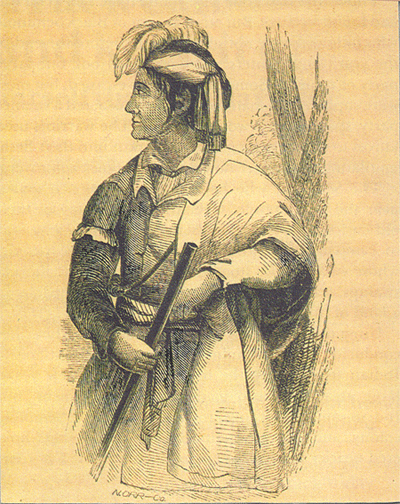 |
| By Joshua R. Giddings [Public domain], via Wikimedia Commons |
January 27th, 1837
A different group of Jesup's men find a village near Lake Tohopekaliga. After they battle, they capture 100 horses, 25 blacks, and 5 Seminole.
It was after this confrontation that General Jesup made a decision to change up his tactics and more routinely divide up his army into smaller groups. This was out of only encountering small forces of Seminoles and having multiple groups made it easier to find them.
Jesup's men were divided as such:
Cover of the Withlacoochee - Lt. Col. Foster and 500 men are commanded to hunt the Tallahassee clans in this area.
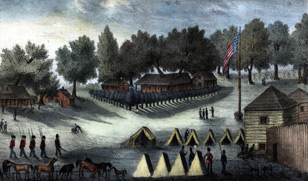 |
| By Wutz (en.wikipedia.org) [Public domain], via Wikimedia Commons |
Northern St. Johns River region – Lieutenant Colonel Alexander C.W. Fanning would send his forces south from the headwaters of the river and search for King Philip's (Emathla's) forces.
Orange Lake area – Another force of Dragoons patrolled this region for any hostile forces.
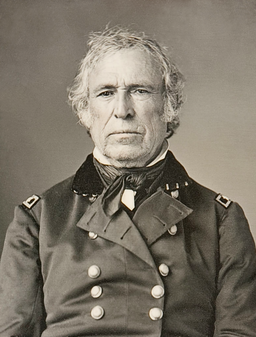 |
| By Zachary_Taylor_half_plate_daguerreotype_c1843-45.png: unknown, possibly Maguire of New Orleans derivative work: Beao [Public domain], via Wikimedia Commons |
February 3rd, 1837
Alligator, Jumper, and Micanopy arrive at Fort Dade to make an agreement on a ceasefire. It was decided that the negotiations would continue on February 8th.
February 8th, 1837
Alligator, Jumper, and Micanopy do not show up at Fort Dade.
While encamped at Lake Monroe, Colonel Fanning and his forces were attacked at sunrise by combined forces of King Philip's and his son Coacoochee. A steamboat patrolling on the lake was able to aid Fanning's forces with artillery fire. After the battle, a fort was built and named after the first man killed in this battle, Captain Charles Mellon.
February 9th, 1837
 |
| By TomFawls (Own work) [CC BY-SA 3.0], via Wikimedia Commons |
March 6th, 1837
Some Seminole, and allied forces, agree to surrender at Fort Brooke. From there, they'll await relocation from the area. Also, in this agreement was that the blacks with them would be allowed to be relocated too. Which was central to this agreement, as it had not been included with the earlier Treaty of Payne's Landing.
April 5th, 1837
As per the agreement, a boundary is established from the Hillsborough River and eastward. No whites are allowed to cross into this region.
April 8th, 1837
An agreement made between General Jesup and several influential chiefs, made in secret, wherein all (former) slaves taken in the war would be turned over. Though, this would cause many problems as the Seminole and other tribes, clans didn't keep track of the numbers of ex-slaves taken.
April 18th, 1837
Arriving at Fort Brooke, Yaholoochee and his band turn themselves in. At Fort Mellon, numerous clans arrive. Including the clans of King Philip, Tuskinia, Coacoochee, Coa Hadjo, Sam Jones, and even Osceola's.
April 29th, 1837
General Jesup writes, in a letter, that he believes the Second Seminole War is soon to wind down and end.
May 1st, 1837
Whites are granted permission to cross the Hillsborough boundary to retrieve cattle that have strayed onto that land.
June 2nd, 1837
Osceola and Sam Jones launch a raid on the detention camp near Fort Brooke with nearly 700 warriors. All the supplies are taken and those detained there scatter. The territory reverts back to a hostile area.
June 11th, 1837
The U.S. Army attempts to increase recruits from the Creek Nation by allowing all property taken by their forces to be kept by them. Though this also applies to any forces that capture property in Florida.
June 22nd, 1837
General Alexander Macomb offers to have General Jesup relieved from commanding Florida's forces but his offer is refused.
July 1837
The Army of Florida is now called the Army of the South.
August 1837
General Gaines looks to take over command of the Army of the South but fails.
September 1837
The alliance of the Seminoles and the blacks in Florida Territory begins to fall apart. Some blacks begin to move into the settlements and tell stories about the hardships they had living amongst the Seminole in the wilds.
September 6th, 1837
As per the agreement in April, all ex-slaves that were captured are to be turned over to the army. From there, the Secretary of War is to make a decision on what is to be done with them.
September 8th, 1837
An ex-slave, along with his wife, arrive at St. Augustine and agree to lead the army forces to where King Philip, his people, and his forces are, near Dunlawton Plantation. After this engagement, King Philip and the rest of the band are captured.
September 9th, 1837
After the capture of King Philip's band, the army heads towards a village where chief Uchee Billy and more Seminole are at. Uchee Billy is captured, by General Hernández and his men, along with his brother Uchee Jack and many other Seminole. The army loses one man, killed by Uchee Billy during his capture. The Seminole had one killed and several wounded. The area around St. Augustine is far less hostile after these captures.
October 1837
General Winfield Scott attempts to regain control of the Army of the South but fails.
October 27th, 1837
Osceola and his people arrive at Fort Mellon with a flag of truce. They are then captured. Osceola and Coa Hadjo are later sent to Fort Marion, in St. Augustine, and held.
Around this time, the Army of the South was split into four groups.
Colonel Zachary Taylor had command over the First Infantry Regiment and was to build a supply fort somewhere between the Kissimmee River and Pease Creek. They were also to engage the enemy whenever spotted.
Colonel Persifor Frazer Smith, commanding a regiment of Louisiana volunteers, was to patrol and defend an area south of Taylor, near the Caloosahatchee River.
Lieutenant Levin M. Powell, of the U.S. Navy, with sailors, artillery, and volunteer infantrymen patrolled the Everglades.
The main column of the army was split into four parts, as such:
Column One - General Hernández and his men were to move from Mosquito Inlet, head north, and then search the area east of St. Johns River.
Column Two – Colonel John Warren and his forces head south of the mouth of St. Johns River.
Column Three – General Abraham Eustis travel along the St. Johns River to destroy any villages they see.
Column Four – Operating from shortly-abandoned Fort King, they patrolled the areas of the St. Johns and Ocklawaha Rivers.
December 1837
Osceola is relocated to Fort Moultrie in South Carolina, along with other Seminoles.
December 5th, 1837
Cherokee leaders arrive in Florida, as a delegation, to try and end hostilities between the army and the Seminole. They took some of the local chiefs along with them. Like Osceola, they approached Fort Mellon with a flag of truce and were captured. Chiefs Micanopy, Nocose, Tuskegee, and Yaholoochee are sent to Fort Marion and held there.
December 19th, 1837
Colonel Taylor is permitted to find the enemy in the area of Lake Okeechobee.
December 20th, 1837
Twenty-six Seminole, including Chief Jumper, turn themselves in and Colonel Taylor takes them into custody.
December 21st, 1837
Colonel Taylor has Fort Basinger built and it becomes a supply stop for campaigns in the area of Lake Okeechobee.
December 25th, 1837
The Battle of Lake Okeechobee begins and is a massive defeat for the Army of the South. They lose 26 men and suffer 112 wounded. This battle temporarily halted Taylor's forces' southern advancement.
December 30th, 1837
Fort Christmas is built and garrisoned by General Jesup and his men.
Events of 1838
January 1838 |
| See page for author [Public domain], via Wikimedia Commons |
Fort Bassinger
Fort Floyd
Fort Hamer
Fort Myakka
Fort Pierce
January 3rd, 1838
General Jesup departs from Fort Christmas with his army column and head south.
January 15th, 1838
Lieutenant Powell's forces battle a band of Tuskegee near the headwaters of the Jupiter River.
January 18th, 1838
 |
| John Plumbe [Public domain], via Wikimedia Commons |
January 24th, 1838
General Jesup, and his force of 1500 soldiers, clash with 300 Seminole and the Battle of the Loxahatchee River begins. This is the last battle that General Jesup commands.
January 31st, 1838
Osceola is said to have died of quinsy while imprisoned at Fort Moultrie in South Carolina. His death occurs around three months after he was 'captured' in Florida. He was buried at Fort Moultrie with military honors.
February 8th, 1838
Hallec-Hajo and Toskegee meet up with General Jesup. They are told to set up an encampment near Jesup's forces. General Jesup then sends out a letter about the Seminoles requesting a reservation for them in Southern Florida.
February 20th, 1838
Colonel Taylor is found to not be at fault over the massive defeat at the Battle of Lake Okeechobee. He then becomes a Brigadier General.
March 17th, 1838
General Jesup receives a reply to his letter, from Washington D.C. A reservation for the Seminole is denied.
March 21st, 1838
Colonel David Emanuel Twiggs is sent to the Seminole camp and disarms them. They then "capture” the Seminole, numbering around 500 with 151 warriors. Once news got out, this event causes unrest and violence to increase throughout the territory.
March 22nd, 1838
Lieutenant Colonel James Bankhead gets into a skirmish with warriors led by Holatoochee. Holatoochee is captured some days later.
First Week of April
Holatoochee, a black man named Abraham, and several chiefs are sent out to negotiate with Chief Alligator to surrender himself and his people.
April 24th, 1838
Lieutenant Colonel William S. Harney and his forces engage with a small band of Seminole.
May 15th, 1838
General Jesup gives command of Florida to Brigadier General Zachary Taylor.
May 27th, 1838
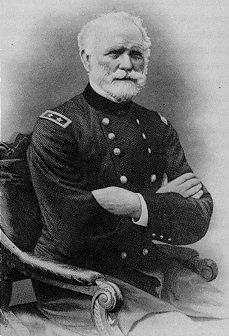 |
| See page for author [Public domain], via Wikimedia Commons |
June 4th, 1838
Troops from Fort Brooke engage a band of Seminole near Camp Izard, in the area of the Withlacoochee River. The Seminole forces burn Fort Dade down and almost do the same with a bridge over the Withlacoochee.
Major Benjamin Lloyd Beall leads his forces into an engagement of Seminole at Kanapaha Prairie. This results in the death of Captain Walker and the wounding of six dragoons.
August 20th, 1838
Due to the unending hostilities in Central Florida, the Secretary of War approves 500 mounted Florida militiamen and they have the task of guarding the area.
October 1838
The remaining Apalachicola, the last remnants of their tribe that left Florida between 1833 and 1834, are removed to Indian Territory.
November 1838
Brigadier General Taylor begins his fall and winter campaigns.
Colonel William Davenport re-establishes Fort Clinch and his forces patrol the Cove of the Withlacoochee.
Colonel Fanning re-establishes Fort Mellon.
Lieutenant Colonel Green and his forces patrol the area of St. Marks River to the Suwannee.
Major Gustavus Loomis patrols the area of Okefenokee Swamp.
Colonel Twiggs and his men search the area east of St. Johns River, then head south to New Smyrna where they proceed to build a post.
These forces main purpose was to build fortifications and roads to more quickly relocate any bands of Seminole and send them south of the line between Tampa Bay and New Smyrna. By the end of November, it was clear that this campaign was a failure before it even really began.
Events of 1839
January 23rd, 1839 |
| By AlexanderMacomb.jpg: Thomas Sully (1783-1872) derivative work: Hohum (AlexanderMacomb.jpg) [Public domain], via Wikimedia Commons |
February 2nd, 1839
Eighteen Seminole are captured near Fort Mellon.
Two army soldiers are wounded in an attack around the area of Micanopy.
February 15th, 1839
Under orders of General Taylor, the plan of dividing Florida into 'squared' sections is carried out.
February 25th, 1839
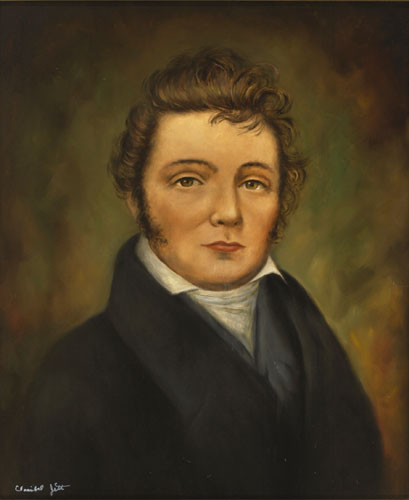 |
| See page for author [Public domain or Public domain], via Wikimedia Commons |
March 18th, 1839
Commanding General Macomb takes up orders to get to Florida and help negotiate treaties to end the war. As the war is just starting to become unpopular in DC and amongst some of the country's population.
April 5th, 1839
General Macomb arrives in Florida, near Jacksonville.
May 18th, 1839
General Macomb waits for Seminole chiefs to arrive at Fort King to negotiate an agreement to end the hostilities.
May 20th, 1839
Chiefs Chito Tustenuggee and Halleck Tustenuggee arrive at Fort King, negotiate with General Macomb and then sign an agreement wherein all Seminole bands still in Florida are permitted to live in an area south of Pease Creek. This agreement comes into effect on July 15th, 1839.
June 5th, 1839
Thirty Seminole escape a camp that they were being held in, pending relocation to Indian Territory. On the next day, those Seminole that didn't escape were sent west to Indian Territory.
July 20th, 1839
In the final months of his command, Brigadier General Taylor oversaw the building of 848 new roads and trails and 3,600 feet of bridges and causeways. Also, 53 new posts and supply stops were constructed.
July 23rd, 1839
Colonel Harney, commanding dragoons protecting a new trading post being built near the mouth of the Caloosahatchee River, are attacked in the early morning by nearly 200 Seminole warriors. It is Chakaika who leads the Seminole in this attack. Eighteen men at the site of this trading post are killed or captured, some burned alive. Also, Colonel Harney barely escapes. The Seminole also kill a trader and get away with many guns and trade items.
December 1839
Governor Richard Call is replaced, due to disagreements with the federal government, and Robert Raymond Reid takes his place.
Events of 1840
January 6th, 1840
 |
| See page for author [Public domain], via Wikimedia Commons |
January 27th, 1840
Two bloodhounds are put into action, alongside the army, in searching for Seminole.
March 28th, 1840
Captain Gabriel J. Rains and the 7th Infantry leave Fort King to scout another area. They are ambushed by 98 warriors and allied blacks. Captain Rains then notices that his men are in danger in being encircled. He commanded the remainder of his force, twelve men, and they charged the rear towards Fort King. Seven of his men are killed during the ambush. Captain Rains was also nearly killed during this event and suffered major wounds. Due to this, he is carried by three of his men, while the rest of his force guard the rear, as they make their way to Fort King.
April 21st, 1840
 |
| By N. Orr [Public domain], via Wikimedia Commons |
May 6th, 1840
Brevet Brigadier-General Walker Keith Armistead relieves General Taylor and replaces him as commander of the forces in Florida. He sets up his headquarters in St. Augustine.
May 11th, 1840
General Taylor leaves the Florida Territory.
May 19th, 1840
Forces led by Lieutenant James S. Sanderson are attacked 8 miles from Fort King. The Seminole forces that attacked them numbered around 100 and were led by Coacoochee. Lieutenant Sanderson and seven of his troops are killed in this attack. Ten of his men survive the attack.
June 1840
Captain Benjamin Louis Eulalie de Bonneville and his men are searching in the area of Big Swamp, about 15 miles from Fort King, when they find a band of Seminole carrying out a ceremony. The Seminole quickly scatter into the hammock.
A main army depot moves from Garey's Ferry to Palatka. A hospital is also situated at Picolata at this time.
June 2nd, 1840
Lieutenant Colonel Bennet C. Riley, of the 2nd Infantry, leads a force against Chocachatti Prairie, the location of a Seminole village and stronghold, completely destroying it.
August 7th, 1840
Chief Chakaika, thought to be the last of the Calusa, leads his warriors to raid Indian Key. Which was the capital of Dade County at that time. 13 of the 70 settlers at Indian Key are killed. Chakaika also captures a large amount of ammunition and gunpowder. Some of the escaped settlers make their way to Tea Table Key, which was a navy post with a hospital and training areas, and tells them what happened. In response, Midshipman Francis Key Murray gathers up some volunteers (some still sick) from the hospital, along with five sailors, and they head for Indian Key by ship.
As soon as they arrive they are shot at by the Seminole. Which causes them not to be able to land on the island. So Murray has his men fire on the Seminole, with their four-pounder cannons, three times. After sailors reposition their cannons athwartship (instead of bow to stern) the cannons' recoil causes the cannons to go over the edge of their boat after the first shot. The Seminole answer these shots with a six-pounder they captured on the island. Being without their cannons, Murray makes the decision to return to Tea Table Key. Once they arrive, they prepare for a possible attack from the Seminole.
August through November 1840
Much of the hostilities are temporarily put on hold, a ceasefire of sorts, to give the remaining bands of Seminole a chance to meet with the army forces and agree to leave the Florida Territory.
November 10th, 1840
Seminole leaders Halleck Tustenuggee and Thlocklo Tustenuggee attend talks with General Armistead at Fort King. He offered each of the Seminole leaders around $5,000 to surrender themselves and their bands. The Seminole leaders said they would think about it, staying at the fort for nearly two weeks while being fed and given supplies by the army, only to silently take off. After this, a 'state of hostility' resumed throughout the Florida Territory.
December 4th, 1840
Lieutenant Colonel Harney (now healed from his injuries) sets out from Fort Dallas, at modern-day downtown Miami, with his men to search for Chakaika. Lieutenant Colonel Harney has his men paint themselves up like the Seminole and they head into the Everglades. They were guided to the area of Chakaika and his band by a black man, John, that had lived amongst them for a while. Chakaika and his band were caught by surprise and unable to escape. Chakaika gave a gesture of surrender and was instead shot to death, possibly by Harney, and the rest of his band are executed not long afterwards.
December 28th, 1840
2nd Lieutenant Walter Sherwood, of the 7th Infantry, Lieutenant N. Hopson, Sergeant-Major Francis Carroll, and ten privates from the 7th Infantry are escorting the wife of Lieutenant Montgomery from Fort Watkahoota to Micanopy. Which was a distance of eight miles. Nearly halfway there, they were confronted by 30 Seminole warriors, lead by Halleck Tustenuggee, near Martin's Point. Two privates were killed by gunfire. Lieutenant Sherwood has his men attempt to fight back against the larger force. Meanwhile, Mrs. Montgomery is told to hide in the wagon but is shot in the chest in the process and quickly dies from her wound. The Seminole forces, having the upper hand, begin to overrun Lieutenant Sherwood and the remaining men. In the chaos, Lieutenant Hopson is able to get on a horse and escape. He heads to Micanopy to get reinforcements. The rest of the party left behind, including Sherwood and others, make their last stand until the end. They are then killed and scalped by the Seminole.
Events of 1841
February 1841
 |
| By Matthew B Brady (M.B. Brady Photography) [Public domain], via Wikimedia Commons |
March 2nd-4th, 1841
Lieutenant William Alburtis, of the 2nd Infantry, ambushes a band of Seminole led by Halleck Tustenuggee. Although, it was Halleck Tustenuggee who looked to ambush Alburtis' forces stationed at Fort Brooks (Ocklawaha, Florida). Lieutenant Alburtis was successful in his counter-ambush and drove out Halleck's band. Two days later, Halleck and his band attack a supply train heading to Fort Brooks. This leads to Lieutenant Alburtis and his forces engaging them in a bayonet charge and close fighting. Halleck and his warriors were driven off again.
March 5th, 1841
Coacoochee shows up at Fort Cummings (modern-day Lake Alfred) after an invite from General Armistead. They were dressed in outfits that they had taken during an attack on a baggage train in May of 1840. Two actors were killed in that attack. Coacoochee was dressed as Hamlet while the two others with him were dressed as Richard III and Horatio. They were there to negotiate for supplies and for the well-treatment of his people. As they negotiated, Coacoochee's young daughter, who he thought had been killed (not knowing she had been captured), interrupted the meeting after hearing his voice. Coacoochee saw her and began to cry.
March 9th, 1841
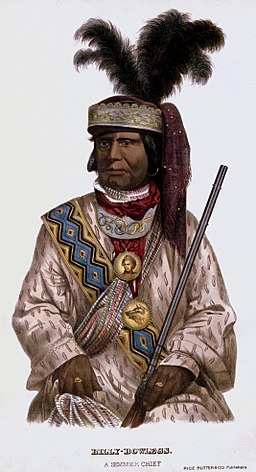 |
| By McKenney, Thomas Loraine, 1785-1859; Hall, James, 1793-1868 [Public domain], via Wikimedia Commons |
March 22nd, 1841
Coacoochee meets with General Armistead at Fort Brooke and agrees to relocate after the Green Corn Dance in June. In response to this, many of the activities of the army were suspended.
May 1st, 1841
Coacoochee makes one of many journeys to Fort Pierce in preparation for their relocation. He and his warriors make these visits to request and gather supplies.
May 31st, 1841
General Armistead requests to be relieved of command. It is granted and command of Florida was given over to Colonel William Jenkins Worth.
June 4th, 1841
Major Childs, in believing that Coacoochee's supply trips were for stockpiling for a return to the hammocks, got permission to detain Coacoochee and those with him. Once they arrived at the fort, Coacoochee was seized, along with a brother of King Philip, Coacoochee's younger brother Otulke, and thirteen warriors. Guided by Coacoochee's interpreter, a black man named Joe, soldiers walked fifteen miles to Coacoochee's camp. When they arrived, the rest of Coacoochee's people had already left and so they headed back to the fort. Major Childs then prepares to send Coacoochee and his followers to New Orleans. But this plan is stopped by Colonel Worth, who looked to use Coacoochee to bring in the other Seminole bands still in the region.
August 8th, 1841
Members of Coacoochee's band bring in more of his followers. Though five men and fifteen women are still out in the hammock.
August 9th, 1841
Colonel Worth's resettlement plan, for white settlers in the Florida Territory, has its first success. Thirteen settlers and their eight slaves begin to resettle at Cedar Hammock, near Fort White.
Later in August 1841
Coacoochee helps bring in Chief Hospetarke for what Hospetarke believes would be a negotiation. Hospetarke is then captured along with some of his followers that were with him. Some of those followers and then sent out, with soldiers, to get the rest of Hospetarke's band to turn themselves in.
October 1841
Colonel Worth has a boundary created that includes Punta Rassa, stretching through Fort Denaud, onto Lake Okeechobee and across the territory to Fort Dallas or Fort Pierce.
October 12th, 1841
Colonel Worth has over 200 Seminoles relocated, including Hospetarke and Coacoochee, and they are sent out west. Some of them go on to also serve as guides and interpreters for the army.
October 19th, 1841
A delegation of Seminole chiefs, who had since relocated to Indian Territory, are sent back to Florida Territory, and to Fort Brooke, to try and talk other Seminole bands into turning themselves in and relocating. A chief and 160 followers turn themselves in at Fort Brooke.
December 20th, 1841
Halleck Tustenuggee and fifteen of his warriors attack Mandarin, near Dunn's lake, killing four settlers, burning down two buildings, and grabbing town supplies. This causes the army to renew their campaign in the northern area of the territory, as commanded by Colonel Worth. He commands that forces at Micanopy, those around the Ocklawaha River, and soldiers from the western region to keep a portion of their troops actively searching for hostiles.
Major William Goldsmith Belknap was left in charge during Colonel Worth's short absence. He leads some of his men to search for Thlocklo Tustenuggee and Billy Bowlegs in the Everglades. Though they captured a few Seminole, both Thlocklo Tustenuggee and Billy Bowlegs escaped.
1842 - End of the Second Seminole War
January 21st, 1842
 |
| By Civil War glass negative collection, Library of Congress [Public domain], via Wikimedia Commons |
January 25th, 1842
Major Joseph Plympton and 102 soldiers, of the 2nd Infantry, go out searching for and find Halleck Tustenuggee's band in the area of Dunn's Lake. A fight begins and, during the battle, the Seminole head further into the hammock. Due to this, a new plan is outlined to corner both Halleck's and Octriarche's bands. The army consisting of these columns:
Colonel John Garland - 4th Infantry operating out of Fort Fanning.
Colonel Gustavus Loomis – 6th, Infantry operating in the Wacasassa Hammock.
Lieutenant Colonel William Whistler - 7th Infantry operating in the areas between Micanopy and Wacahoota.
February 1842
Colonel Worth states that the southern portion of the Florida Territory is nearly empty of all hostile bands. All but two of his companies are moved North. Also, the 3rd Artillery is relieved of its duties in the territory and begin to depart from Florida.
February 5th, 1842
Colonel Worth, in a message to the federal government, makes a suggestion that the small bands remaining in Florida should be given a reservation. He saw it as not being worth the time to have them surrender and relocated. His idea is to have a reservation created on Florida's west coast, south of Pease Creek. His plan is rejected for the time being.
March 1842
Another resettlement plan by Colonel Worth is successful. Settlers consisting of 164 men, 137 women, and 192 children are settled in the territory. Also, 103 slaves and 56 slave children settle in the territory.
April 19th, 1842
The plan to capture Halleck Tustenuggee is carried out. He and his 40 warriors are cornered in the hammock in the area of the Peliklakaha settlement. Colonel Worth sends in 400 soldiers, made of men from the 2nd, 4th, and 8th Infantry Regiments, to try and cause the band to surrender. Once Colonel Worth and his forces arrive they find that the Seminoles' defensive positions were similar to those at the Battle of Lake Okeechobee. The army fired into the hammock and then charge the Seminole positions. This causes the Seminole to scatter and most of them end up escaping, find only supplies left behind. This would be the last formal battle of the Second Seminole War.
April 29th, 1842
Halleck Tustenuggee, along with his two wives and his children, arrive at Warm Springs to meet with Colonel Worth. They leave Warm Springs and head off to Fort King to attend a feast, as promised to the attending Seminole by the commander of Fort King. Nearly as soon as Colonel Worth and Halleck Tustenuggee arrived, a signal was sounded and all of the Seminole who had attended were taken into custody. Which included 43 warriors, 37 women, and 34 children. The feast was nothing more than a ploy to capture Seminoles.
May 10th, 1842
The Second Seminole War is being criticized by the public. Especially in its treatment of the Seminole and other Florida tribes. A new Secretary of War, John C. Spencer, sends a message to Colonel Worth telling him that he should put a complete end to the war as soon as possible.
July 14th, 1842
Halleck Tustenuggee and his people are relocated out of the Florida Territory and to Indian Territory.
August 3rd, 1842
Lieutenant McLaughlin, the commander of the naval detachment in the Everglades, dismisses his force from duty there and they return to their fleet.
August 5th, 1842
Colonel Worth send out messages to chiefs in the territory that he is at Cedar Key and is willing to meet with any and all chiefs to discuss agreements on ending hostilities. Billy Bowlegs and two of his fellow chiefs arrive at Cedar Key to meet with Colonel Worth. No decision is communicated to Colonel Worth.
August 9th, 1842
Thlocklo Tustenuggee and Octiarche arrive at Cedar Key to meet with Colonel Worth. They leave without telling what their decision on being relocated is.
Later in August 1842
The reservation plan, permitting some Seminole to live in an area of the west coast of Florida, is allowed to come into fruition.
The federal government passes the Armed Occupation Bill into law. Under this law, settlers would be given land grants in Florida, just as long that these stipulations were followed:
The settlers' land must be south of a boundary, running east to west, that exists three miles north of Palatka and ten miles south of Newnansville.
It must be occupied for a period of five years.
Settlers must build a house and have five acres set aside for agricultural use.
Settled land must not be within two miles of a military post.
Over 200,000 acres of land were given to settlers during the two years that this law was in effect.
August 14th, 1842
Colonel Worth declares that the Second Seminole War is over.
October 12th, 1842
At this point, the only regular forces left in the Florida Territory were men from the 3rd Infantry, six companies from the 4th Infantry, and the 8th Infantry. These forces were based at military posts throughout the Florida Territory.
November 1842
Colonel Worth returns to Florida and has become impatient in waiting for Thlocklo Tustenuggee and Octiarche to make up their minds. He orders his forces to bring the both of them in. They find Thlocklo Tustenuggee and end up having to carry him on a stretcher due to his terrible illness. Thlocklo ended up dying, in New Orleans, before he made it to Indian Territory. Around this time, Northern populations of Seminole were also sent to Indian Territory.
End of the War
The 'activity' of the Second Seminole War decreased and the remaining bands of Seminole in the Florida Territory were mostly left alone. Although attacks by Seminoles still occurred every now and then. Not long after, the people of the Seminole and other tribes still in Florida were no longer considered a danger to the settlers and the only forces left in Florida were the 8th Infantry.



